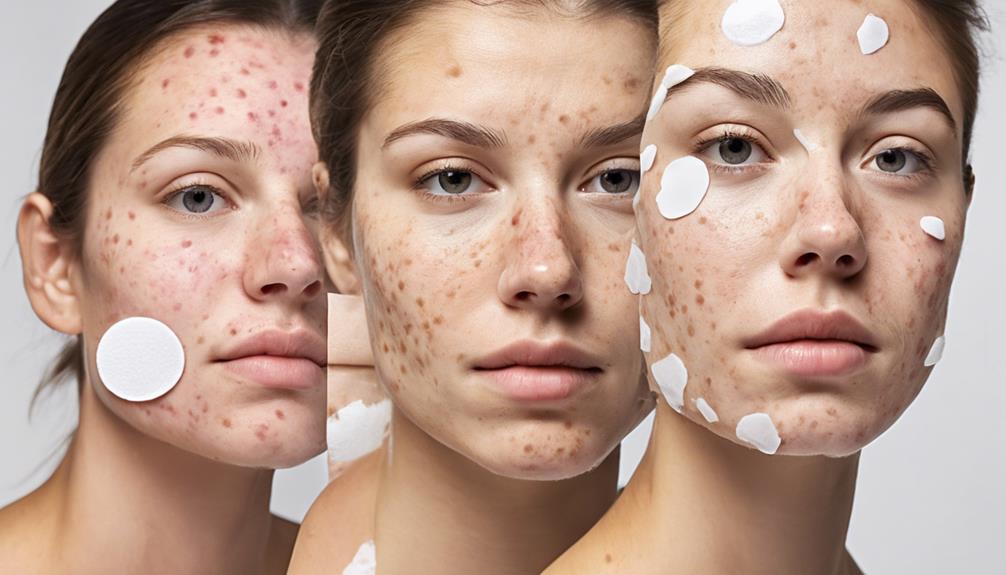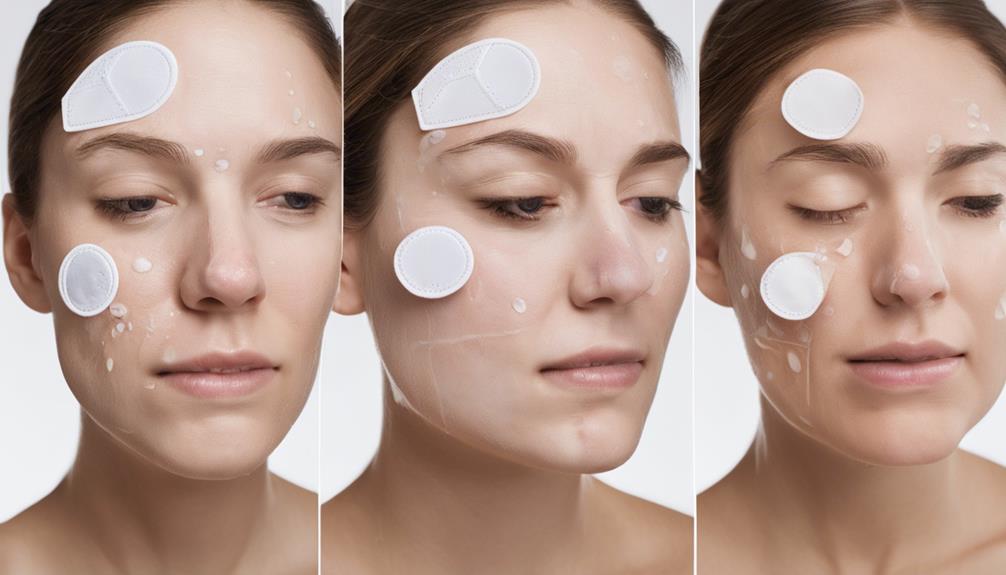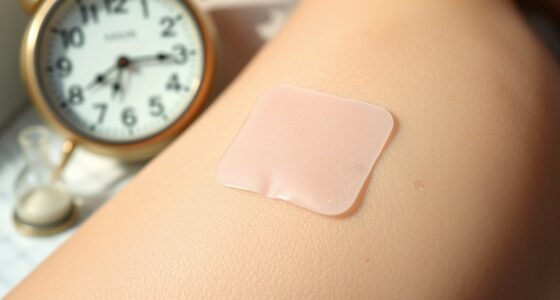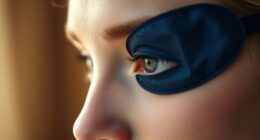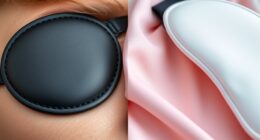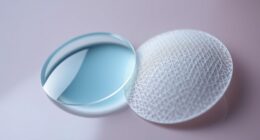Pimple patches can be advantageous for treating acne by offering targeted therapy and assisting in the process of healing. These patches are available in different varieties tailored to address various acne concerns and skin types, offering benefits such as reducing inflammation, safeguarding the skin, and accelerating the healing process. While they can be effective, some potential drawbacks include the risk of skin irritation or the patches being visible on the skin. Proper application, consideration of skin sensitivity, and seeking advice from a dermatologist for personalized recommendations are crucial for optimal outcomes. Understanding the available types and their mechanisms can help maximize the advantages of using pimple patches. Further insights can be found by exploring the effectiveness of pimple patches.
Key Takeaways
- Pimple patches are beneficial for reducing inflammation, redness, and oily secretion in acne.
- They create a protective barrier for natural healing and faster recovery.
- Consultation with a dermatologist can provide personalized recommendations for effective treatment.
- Patches with acne-fighting ingredients aid in treating different types of acne blemishes.
- Proper application and monitoring can enhance the effectiveness of pimple patches for acne.
How Pimple Patches Benefit Acne
Pimple patches offer a convenient and effective way to target and treat acne blemishes directly. These patches typically contain hydrocolloid, a substance that helps reduce inflammation, redness, and oily secretion commonly associated with mild to moderate acne. By creating a protective barrier over the affected area, pimple patches aid in natural healing processes while also minimizing the risk of infection.
In addition to traditional hydrocolloid patches, there are also innovative microneedle patches available. These dissolving patches have shown promise in reducing acne and dark pigmentation over time. It's important to note that the effectiveness of pimple patches can vary depending on the type of acne and the specific patch used.
For personalized recommendations, consulting a dermatologist is highly recommended. Dermatologists can assess individual skin conditions and provide guidance on the most suitable treatment options, ensuring effective and tailored care for acne-related concerns.
Types of Pimple Patches Available
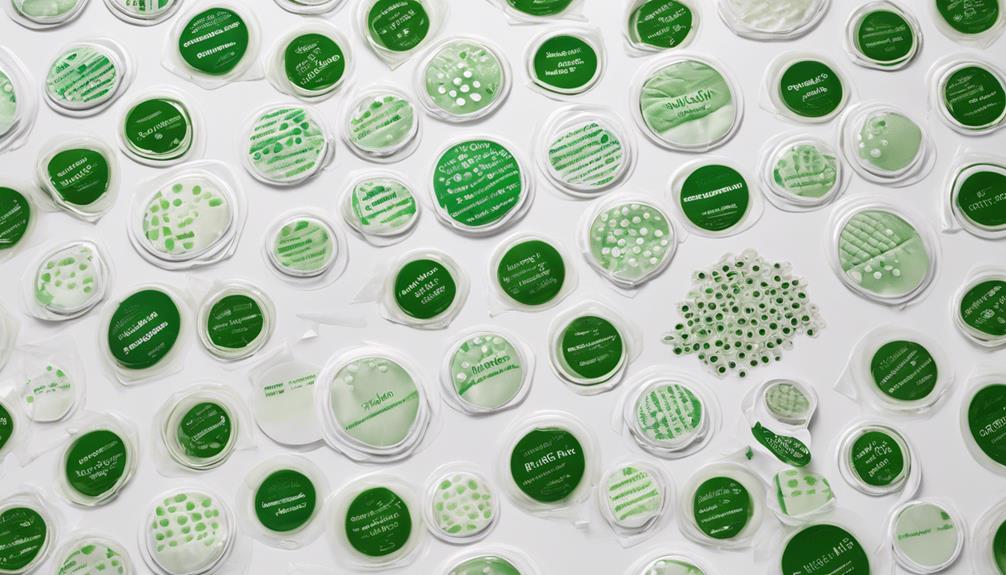
After discussing how pimple patches benefit acne, let's now explore the various types of patches available for treating different types of blemishes and skin conditions. Pimple patches come in different forms to cater to specific purposes in treating acne. Here are the types commonly found in the market:
| Type | Description | Purpose |
|---|---|---|
| Hydrocolloid | Effective for draining raised pimples with visible pus. | Draining and healing existing pimples |
| Medicated | Contains ingredients targeting bacteria and inflammation for acne treatment. | Targeting bacteria and inflammation |
| Microneedling | Delivers active ingredients deeper into the skin for enhanced healing. | Enhancing skin healing |
These different pimple patches create a moist environment conducive to faster healing of existing pimples. Whether you need to drain pus-filled pimples, target bacteria and inflammation, or enhance skin healing with active ingredients, there's a pimple patch suited for your specific acne treatment needs.
Effectiveness of Pimple Patches
When evaluating pimple patches for acne treatment, it's essential to assess the severity of acne and consult with a dermatologist for personalized recommendations. Using dissolving microneedle patches has demonstrated efficacy in reducing acne and dark pigmentation after 28 days of consistent use. Pimple patches can be effective in addressing various skin conditions, serving as a protective barrier that aids in natural healing processes and reduces the risk of infection.
Here are some key points to keep in mind when assessing the effectiveness of pimple patches:
- Pimple patches can effectively reduce redness, oily secretion, and dark spots in mild to moderate acne.
- The type of acne and the specific patch used can influence the effectiveness of pimple patches.
- Seeking advice from a dermatologist is recommended to determine the most suitable treatment for individual skin conditions.
- Pimple patches containing acne-fighting ingredients like salicylic acid or tea tree oil may help in treating acne.
- Hydrocolloid patches are popular for their ability to absorb fluids, protect the wound, and promote faster healing.
Proper Application of Pimple Patches
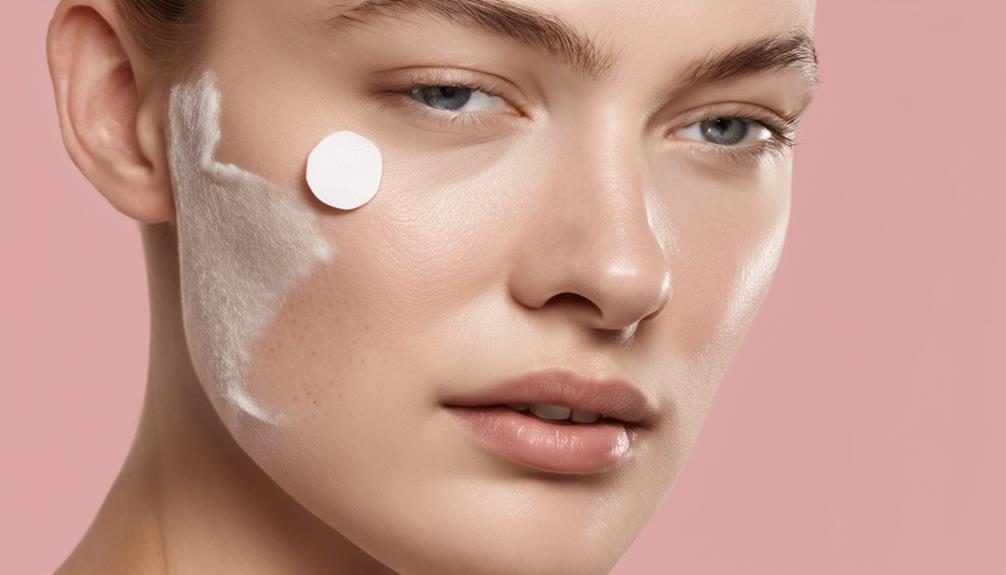
Prior to applying pimple patches, make sure that the pimple area is clean and dry to facilitate proper adhesion. This step is essential for the patch to stay in place and effectively target the pimple.
When applying the patch, directly place it over the pimple to maximize its benefits. Pimple patches work by absorbing excess oil, pus, and impurities from the skin, which can help reduce inflammation and promote faster healing. Following the instructions on the label regarding how long to leave the patch on is important for best results.
Proper application of pimple patches not only aids in oil absorption but also ensures that the patch adheres well to the skin, allowing it to do its job effectively. Additionally, maintaining good skin hygiene and replacing the patch as recommended are key factors in getting the most out of using pimple patches.
Considerations When Using Pimple Patches
When using pimple patches, it's important to take into account the material type of the patch, the correct application methods, and any potential skin sensitivity concerns. Different patch materials may work better for varying skin types, so choosing the right one is vital.
Additionally, being mindful of how to properly apply and remove the patches can maximize their effectiveness in treating acne. Using the patches on clean, dry skin allows them to adhere better, while leaving them on for the recommended duration enhances their ability to draw out impurities. The starface pimple patch benefits include not only helping to reduce the size and redness of blemishes but also providing a protective barrier that prevents picking and further irritation.
Patch Material Types
Let's explore the various types of materials used in pimple patches to understand their impact on acne treatment efficacy.
- Hydrocolloid patches help in absorbing excess fluid from pimples, promoting faster healing.
- Some patches contain active ingredients like salicylic acid, tea tree oil, or benzoyl peroxide to target bacteria and inflammation.
- Medicated patches with dissolving microneedles deliver ingredients deeper into the skin for enhanced efficacy.
- Pimple patches are often made of polyurethane film, providing skin protection with an inner layer designed to absorb fluid from pimples.
- Non-medicated hydrocolloid patches, favored by some dermatologists, can be worn for 2-3 days with daily replacement for the best results.
Application Methods
For essential adhesion and effectiveness, always clean and dry the pimple area before applying a pimple patch. Some patches are suitable for daytime use, while others work best when worn overnight. It's vital to select a patch size that completely covers the pimple for effective healing. Pimple patches can typically be left on for a few hours or up to 2-3 days, following the manufacturer's instructions. Adhering to the recommended duration and frequency of use is key to maximizing the benefits of pimple patches in acne treatment.
| Consideration | Details |
|---|---|
| Daytime Use | Some patches designed for daytime wear. |
| Overnight Use | Others meant for wearing overnight. |
| Patch Size | Choose a size that covers the entire pimple. |
| Duration/Frequency | Follow instructions for optimal results. |
Skin Sensitivity Concerns
Considering skin sensitivity concerns, it's important to be mindful of potential irritations or allergic reactions when using pimple patches.
- Pimple patches may lead to skin irritation, redness, or dryness for those with sensitive skin.
- Allergic reactions to patch materials could result in hyperpigmentation.
- Serious adverse reactions to pimple patches are uncommon but require immediate medical attention.
- Consulting a dermatologist is recommended, especially for sensitive skin types.
- Before full use, conducting a patch test can help identify any adverse reactions or sensitivities to pimple patches.
Potential Drawbacks of Pimple Patches
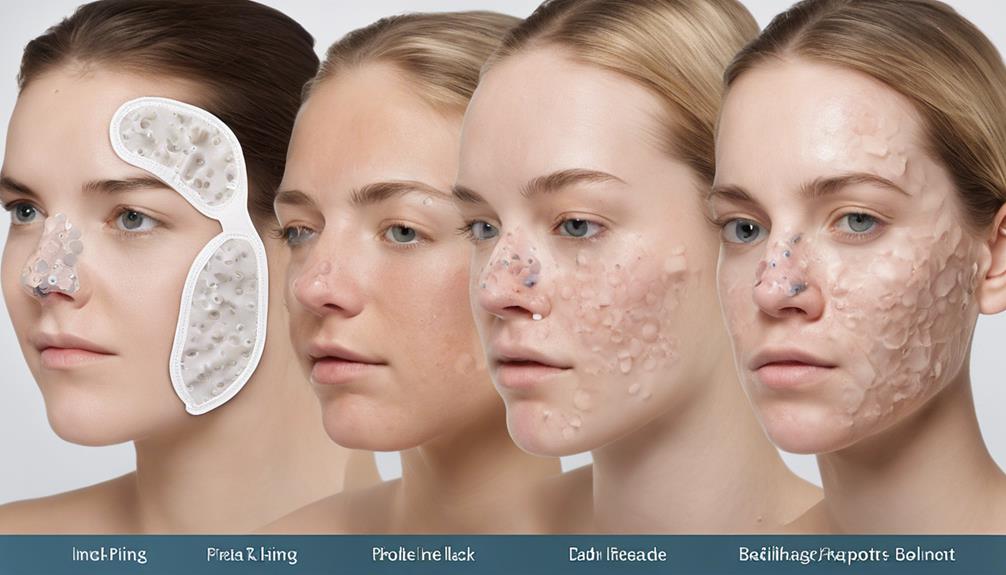
When using pimple patches, it's important to be aware of potential drawbacks that can include skin irritation, redness, and dryness in certain individuals. Allergic reactions to patch materials or added ingredients might even lead to hyperpigmentation, although serious allergic reactions are rare.
If you experience any concerning symptoms, such as severe redness or persistent irritation, seek advice from a dermatologist promptly. To minimize risks, it's recommended to conduct a patch test before full application, choose the appropriate patch size for the blemish, and carefully follow the package instructions.
Consulting with a dermatologist can provide personalized recommendations tailored to your skin type and specific concerns. By being proactive and attentive to your skin's reactions, you can enjoy the benefits of pimple patches while mitigating potential drawbacks effectively. Remember, your skin's health and comfort are a priority when using any skincare products.
Frequently Asked Questions
Are Pimple Patches Bad for Acne?
Pimple patches can be bad for acne if they aren't suitable for the specific type of acne you have or if you have sensitive skin that reacts negatively to the ingredients in the patches.
In some cases, pimple patches may not effectively treat certain acne conditions, leading to dryness, irritation, or limited results. It's crucial to factor in your skin type and the type of acne you have before using pimple patches.
Do Dermatologists Recommend Pimple Patches?
Dermatologists often recommend pimple patches for acne treatment. These small stickers can help reduce inflammation, prevent picking, and speed up healing.
Some prefer non-medicated options to avoid skin irritation. Overall, many dermatologists view pimple patches as safe and effective spot treatments.
For personalized advice on using them, consulting a dermatologist is wise.
Do Pimple Patches Work on Unpopped Pimples?
Pimple patches work great on unpopped pimples by absorbing excess oil and pus, creating a barrier to prevent further irritation and promoting faster healing.
Specifically designed hydrocolloid patches target inflammation and redness, aiding in overall acne management.
Using them can prevent picking, scarring, and further infection, making them a valuable tool in acne care.
What Kind of Acne Are Pimple Patches Good For?
Pimple patches work wonders on pimples with visible pus, like mini vacuum cleaners for your face! They're like little helpers for mild to moderate acne, tackling those pustules and papules head-on.
These patches are pros at absorbing excess oil and pus, promoting faster healing and warding off infections. But remember, they're not the best match for closed comedones or cystic acne.
Stick them on those draining pimples, and let the magic happen!
Conclusion
To sum up, pimple patches can be a great tool for addressing acne, offering targeted treatment and helping to reduce inflammation and redness. With various types available and proven effectiveness, they provide a convenient solution for managing breakouts.
However, it's crucial to follow proper application guidelines and consider potential drawbacks, such as skin irritation or limited effectiveness on certain types of acne.
In general, pimple patches can be a valuable addition to your skincare routine, but it's important to use them wisely.
